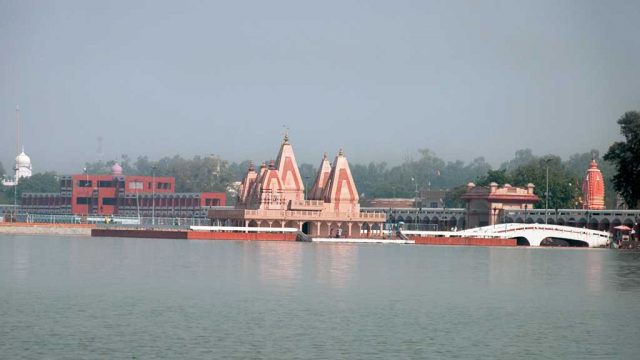In the Matsya Purana, Kurukshetra is mentioned as the most sacred region of the Dvapar Age. According to mythology, King Kuru, after whom Kurukshetra is named, wished that all his descendants would attain moksha. Since the prescribed path for moksha is adhering to one’s dharma, Kuru prayed that his descendants might never stray from their dharma. He realised that affection, disease and accidents could keep his children from living up to this ideal, so he sought the boon that these might never come in the way of dharma in his land, Kurukshetra. Thus it came to pass that, many generations later, Kuru’s descendants fought against each other – setting aside their family ties – in the 18-day war that’s central to the epic Mahabharata. All those who fell on the battlefield attained moksha, and the belief that dying in Kurukshetra ensures salvation, lives on.
THING TO SEE AND DO
The city of Kurukshetra has many places of interest. All of these are open sunrise to sunset, and it takes little time to get from one to the other. If you visit in February, the sight of yellow mustard fields would be a bonus to a pilgrimage.
Twin Tanks
The most holy places for pilgrims are the twin tanks of Brahma Sarovar and Sannihit Sarovar. It’s believed the two together once made up one vast expanse of water. It is also said that Brahma Sarovar, which is a pucca tank brimming with fresh water from the Western Yamuna Canal, got its name as Lord Brahma performed his first here. Its water draws a lot of migratory birds in winter. Lakhs of pilgrims converge at Brahma Sarovar whenever a solar eclipse occurs. It is separated from the Sannihit Sarovar by a road, and boundary walls. Bathing at the Sannihit Sarovar on amavasya is believed to absolve one of all sins. The changing rooms built around the tanks aren’t clean.
The other important temples in Kuru kshetra are the Sthaneshwar Mahadev Temple in Thanesar, near Sheikh Chehli’s tomb, where the Pandavas invoked Lord Shiva before the eponymous 18-day battle, and the Bhadrakali Temple (north of Thanesar), which is a Shaktipeeth where Sati’s right heel is believed to have fallen.
Scenes from the Mahabharata
Driving past the university, on the Pehowa Road, you reach Narkatari Village, believed to be the site where Bhishma spent his last days on a bed of arrows. The village has a temple and a tank dedicated to Bhishma. Further 10 minutes by road is Jyotisar. A large banyan tree here is held sacred as an offshoot of the tree under which Lord Krishna preached the Bhagvad Gita.
WHILE IN KURUKSHETRA
The Krishna Museum (Tel: 01744-291288; open 10.00 am-5.00 pm, tickets ₹10-30) is a storehouse of art depicting Krishna in various forms, from all over the country. Another place worth visiting is the tomb and madrasa of Sheikh Chehli in the town’s Thanesar quarter, one of Haryana’s most impressive medieval monuments.
WHERE TO STAY AND EAT
Kurukshetra abounds in dharamshalas that provide free or cheap accomm odation. They stand close to the Brahma Sarovar. The only other option is to stay in the Haryana Tourism-run Hotel Parakeet (Tel: 01744-230250; Tariff: ₹1,934) that stands at the turn for Kurukshetra from NH1.
Great Egret (Casmerodius) at Sultanpur
Hotel Parakeet has a restaurant that serves highway fare. Bikaner Sweets at the old bus stand is popular for its chaat and mithai. Hotel Mezban is a clean, AC restaurant (vegetarian and nonvegetarian) which serves good north-Indian fare with piping hot rotis. Akin to Mezban, the restaurants at Hotel Heritage and Hotel Saffron, which also offer good accommodation, stand opposite each other near the Pipli bus stand. The food is good, and worth travelling for.
When to go October-March is pleasant but December-January is very cold Location In northern Haryana Air Nearest airport: Chandigarh Rail Nearest rail: Kurukshetra




